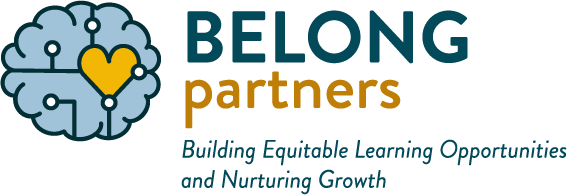“The question we should be asking is not what’s wrong with that child, but what happened to that child?” – Oprah Winfrey
“The more healthy relationships a child has, the more likely they will be to recover from trauma and thrive. Relationships are the agents of change and the most powerful therapy is human love.”
– Dr. Bruce Perry
Let’s talk about trauma and resilience. At Sound Discipline, we teach and coach educators and adults working with or raising kids about trauma-informed practice. Ten years ago, this concept was just migrating to schools and social service delivery. Like a lot of jargon, the term trauma-informed means different things to different people.
When I first participated in the Sound Discipline trauma-informed workshop Reimagining Resilience, I noticed that participants’ initial interpretation of adverse childhood experiences (ACEs) and brain science around trauma was to feel sympathy for their students, as in “this child is damaged.” They discussed students and their problems. They wondered how they might be more kind to them. In the journey to understanding trauma and resilience, this is often our first stop.
After sympathy the wheels started turning. “Wait a minute. I’ve actually been misinterpreting reality. I have been missing cues and making it worse. I have actually been harming kids.” This is a hard realization for any adult who has dedicated their professional life to educating or helping children.
Then they got curious. They learned how to interpret cues, ask questions, and see through a trauma lens:
- When a student misbehaves – What is the problem they are trying to solve that I cannot see?
- How can I respond in a way that will support them find a solution to the problem?
- Who is this person? What are their strengths?
- How can I connect with them?
- How can I model critical social emotional skills — naming feelings, emotional self-regulation, asking for help, admitting and repairing mistakes — so the child feels seen, heard, and powerful?
- What tools can I use to develop our relationship, and shift from reactivity to resonance?
Then came the overwhelm — where to begin? When beginning to see the world through a trauma-informed lens, it’s easy to feel discouraged and overwhelmed. Training on trauma can tend to focus on the research or technical practice but miss the change of heart. It takes that change of heart to integrate what is going on below the surface, and to respond in the moment in a way that sees and calls forth a child’s resilience and ingenuity.
But anything worth doing is worth doing small. Baby steps. Even just one thing. That one thing can be transformative to a child or classroom environment and inspire the next step.

Because of this pandemic, we are all experiencing collective trauma. Recently, I spoke with Ingrid Cockhren, M.Ed., Professor of Psychology at Tennessee State University, and Director of Cooperative Communities at PACEs Connection. Her work and research focus on ACEs, historical and collective trauma, brain development, and developmental psychology. COVID, she says, is the tip of the iceberg. Depending on race, access to health care, access to education, and even access to breakfast, lunch, and dinner, trauma is compounding differently for different groups of people. It is exposing racial fault lines to people who have not been living it every day. “We are experiencing different environments,” she says, “not only our actual environment, but our perceived environment.” Our experiences — real or perceived — imprint beliefs. They prompt us to do what makes us feel safe. We pass these beliefs and survival strategies on to our children, and our children pass those on to their children. This is how, Ms. Cockhren says, we evolve collectively and individually.
Collective trauma changes the fabric of our lives. No matter what we do, we can’t get back to how it was before. But we try, and that’s one reason we may be feeling exhausted and demoralized.
Trauma is not pathology, and it doesn’t mean we are doomed. We can shift from seeing others as damaged or defective. We can notice and confront these biases. We can interrupt our default way of reacting, which might look like this:
- Saying, “I’m fine.” Believing other people’s pain is more valid than mine.
- Relentless positivity. Refusing to acknowledge the hard and messy stuff for ourselves and shutting it down in kids.
- Judging ourselves and others for “bad emotions” like grief, sadness, fear, anger, loneliness.
- Intellectualizing and using doing and being busy to avoid feeling.
How can we make space for our humanness and nurture healing in ourselves and others? Here are some of the strategies Sound Discipline offers in our educator professional development:
- Practice being present — listening and attuning without trying to fix.
- Notice feelings and practice/model regulating — breathing, being in nature, making a soothing routine.
- Acknowledge mistakes.
- Ask for help to find solutions.
- Take small steps.
We are resilient and brilliant human beings. Our traumatic experiences are not who we are. We can recover and we can show up for children to support their recovery.
Sound Discipline is working for a world where children know they belong and can learn and thrive.
We partner with educators, organizations, and families to transform schools into equitable learning communities.
We bring together science-based, trauma-informed, restorative, and Positive Discipline practices to facilitate change in the ways adults see and respond to students.
Courageous Educators:
We facilitate school leaders and educators to build classroom communities and model an inclusive culture school-wide that promotes student agency and well-being.
Equitable School Systems:
We coach administrators and educators to use data to identify and implement solutions that address damaging systemic patterns of inequity that target Black and brown students.
Connected Families:
We train and coach families and caregivers in a child’s life to apply solution-oriented practices that instill critical social emotional life skills.
